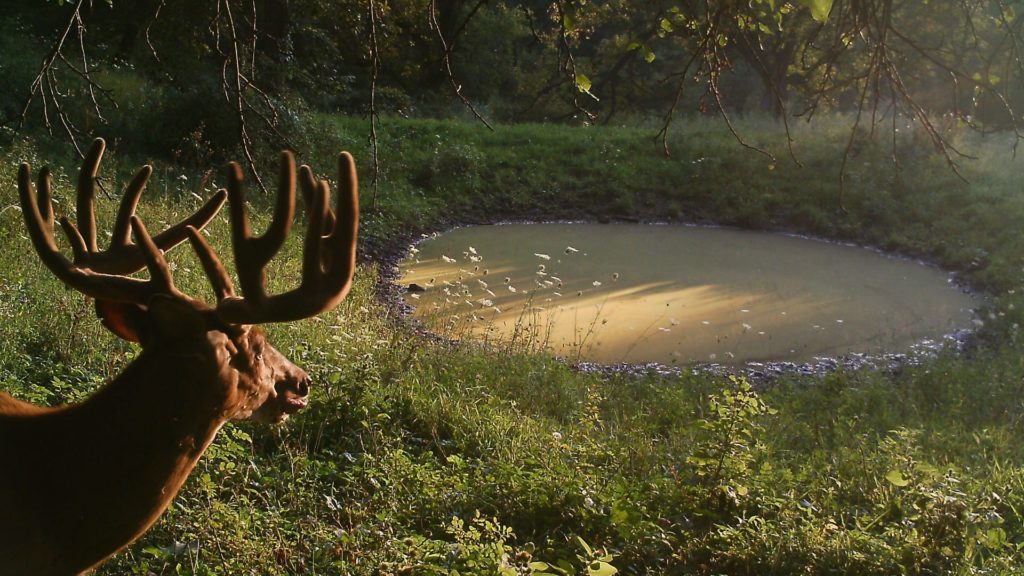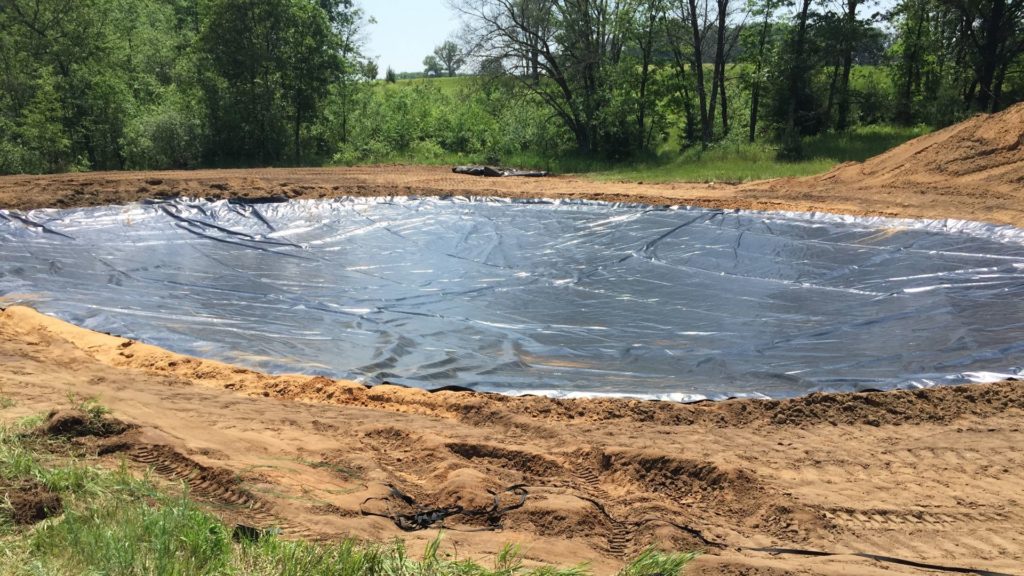By Zachary D. Haas
Senior Aquatic Biologist, Director of Operations
Every year property owners, nature viewers, conservationists, and hunters are looking at how they can improve properties for wildlife. One of the most overlooked items these individuals miss are water sources.
Why Water?

All living things on this planet require water in order to survive. For example, on average a white-tailed deer requires approximately 3-6 quarts of water per day. This quantity is impacted greatly by moisture content in forages, temperature, biological processes, season (summer vs. winter) and humidity. Surface water varieties (ponds, streams, creeks, etc.) become extremely valuable when forages begin disappearing from hot weather, ephemeral ponds dry up, and biological processes ramp up (lactation, antler growth, etc.). If the restriction of water becomes evident, research has proven that wildlife will reduce food intake. Furthermore, if food intake goes away, health disappears as well.
Creating Quality Water
A properly designed water hole/wildlife pond should have a slope of approximately 4:1 to 3:1 to ensure wildlife can easily go in and out of the pond. If the pond is too steep the animals won’t use it, and if the pond is too shallow you increase the potential for planktonic algae blooms and killing the ecosystem through excessive heating. To help with the management of the pond a deeper max depth should be achieved (10+ feet). To increase the depth, you will either have to make a larger diameter pond or increase your end slope in areas of the pond.

You are probably thinking, “That is great and all, but how will I hold water?”. Some individuals will get lucky and either hit a spring or hit groundwater. However, for those that have that perfect spot for a pond on top of a sandy hill, a synthetic liner can be your savior. For this, you will want an actual pond liner designed not to leak as most tarps and canvases are not leak-resistant and tear easily.
The last step of creating quality water is to add a layer of sand, dirt, or gravel on top of the liner. This will help become the planting substrate for your beneficial aquatic plants and provide bio-media for beneficial bacteria to thrive. Furthermore, the sand, dirt, or gravel will also help to cushion the liner and create a substance in which wildlife can walk freely on with reduced or non-existent slipping. Before you do this step make sure to place some landscape fabric down so that the sand, dirt, or gravel stays in place.
Placement of Water Sources
Now that you know the general idea of creating quality water let’s look at where to place those ponds. Wildlife tends to prefer secluded areas with minimal pressure. For that reason, wildlife that is easily spooked such as deer typically sticks to edges, corners, and vegetated areas. Furthermore, wildlife tends to visit areas more frequently where all three management needs (forage, cover, water) are fulfilled. For this reason, ponds are best placed in areas where wildlife can walk out into a food source and near areas of cover.

Putting Together the Whole Idea
Putting water on a property is not a single concept, but rather a collection of different strategies. Treating your water source more like a living breathing organism rather than just a hole in the ground will help you gain more control of your management plan and the ecosystem as a whole. If you take the time this season to manage your current wildlife ponds and design your new ones according to the information provided here, you can help increase your effectiveness as a land manager and increase your success in having wildlife stay on your property.